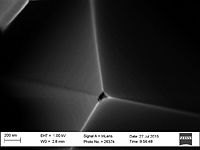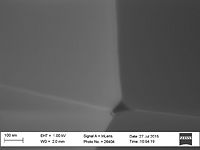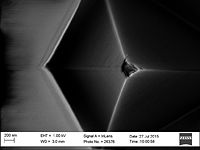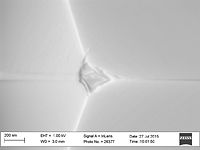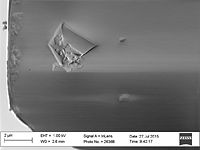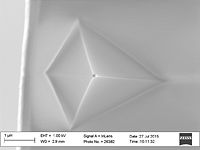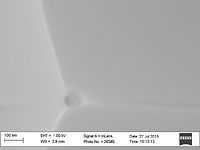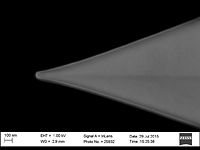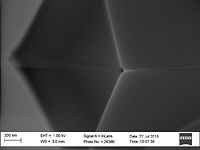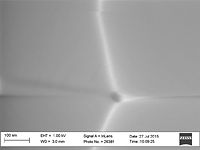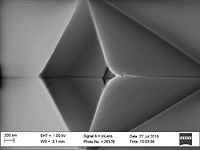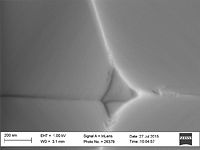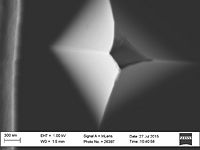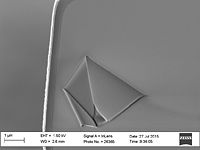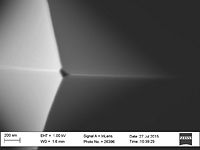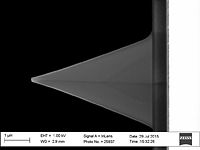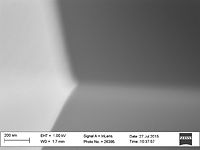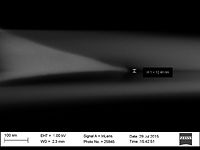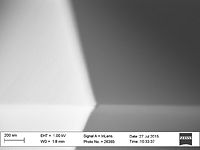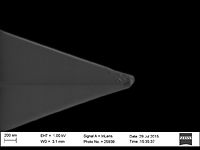Specific Process Knowledge/Characterization/AFM: Atomic Force Microscopy/Workspaces: Difference between revisions
Appearance
| Line 60: | Line 60: | ||
===Contact, Tapping and Peak Force Tapping=== | ===Contact, Tapping and Peak Force Tapping=== | ||
Please flowing this link to Brukers homepage: | Please flowing this link to Brukers homepage: | ||
[http://www.bruker.com/fileadmin/user_upload/8-PDF-Docs/SurfaceAnalysis/AFM/ApplicationNotes/Introduction_to_Brukers_ScanAsyst_and_PeakForce_Tapping_Atomic_Force_Microscopy_Technology_AFM_AN133.pdf Introduction_to_Brukers_ScanAsyst_and_PeakForce_Tapping_Atomic_Force_Microscopy_Technology_AFM_AN133.pdf] | [http://www.bruker.com/fileadmin/user_upload/8-PDF-Docs/SurfaceAnalysis/AFM/ApplicationNotes/Introduction_to_Brukers_ScanAsyst_and_PeakForce_Tapping_Atomic_Force_Microscopy_Technology_AFM_AN133.pdf Introduction_to_Brukers_ScanAsyst_and_PeakForce_Tapping_Atomic_Force_Microscopy_Technology_AFM_AN133.pdf] - NOT WORKING ANYMORE | ||
===PeakForce tapping and quantitative nanomechanical mapping=== | ===PeakForce tapping and quantitative nanomechanical mapping=== | ||
Revision as of 15:01, 1 June 2022
Feedback to this page: click here
What scanning mode, experiment/workspace and probe should I select
| Roughness measurements | Topographic measurements with no steep/abrupt steps | Steep/abrupt steps but no high aspect ratio | High aspect ratio measurements | Large area fast scan | |
|---|---|---|---|---|---|
| Recommended mode | Roughness measurement can be done in both Contact, Tapping and ScanAsyst mode. We recommend ScanAsyst mode because of less chance of (non-uniform) deformation of the sample and less tip wear - and because of ease of use. However it also works fine in tapping mode. | For Topographic measurements with no steep/abrupt steps we also recommend ScanAsyst mode due to less chance of (non-uniform) deformation of the sample and less tip wear - and because of ease of use. | For Steep/abrupt steps but no high aspect ratio structures we still recommend Tapping mode or ScanAsyst mode" . | For High aspect ratio measurements we recommend Tapping mode. There is not yet a ScanAsyst probe developed for high aspect ratio. Therefore we recommend Tapping mode. | For large scan areas where you prioritize to scan fast then you can use contact mode. Here you can scan with scan rate of up to 2.43 Hz |
| Recommended probes | Tap150Al-G or ScanAsyst in air | Tap150Al-G or ScanAsyst in air | Tap150Al-G or ScanAsyst in air for ScanAsyst mode
Tap150Al-G or TAP300Al-G for Tapping mode |
AR5T-NCHR or | SNL |
| Recommended experiment/Workspace |
QNM in air* |
QNM in air* |
QNM in air* | TappingMode 300nm trench (for steps <~1µm)
Tappping mode in air - 6µm Deep Trench (for steps >1~µm) |
Standard Contact mode |
*By choosing the work space/experiment QNM in air (Mechanical properties - QNM in air) scanAsyst is included and so are the nanomechanical properties like modulus, adhesion, dissipation and deformation.
More information about de different modes
Contact, Tapping and Peak Force Tapping
Please flowing this link to Brukers homepage: Introduction_to_Brukers_ScanAsyst_and_PeakForce_Tapping_Atomic_Force_Microscopy_Technology_AFM_AN133.pdf - NOT WORKING ANYMORE
PeakForce tapping and quantitative nanomechanical mapping
Please flowing this link to Brukers homepage:
- PeakForce tapping and Nanomechanical option - NOT WORKING ANYMORE
- Quantitative_Mechanical Property mapping at the Nanoscale with PeakForceQNM - NOT WORKING ANYMORE
Peak Force KPFM (Kelvin Probe Force Microscopy)
Please flowing this link to Brukers homepage: pf-kpfm.html - NOT WORKING ANYMORE

